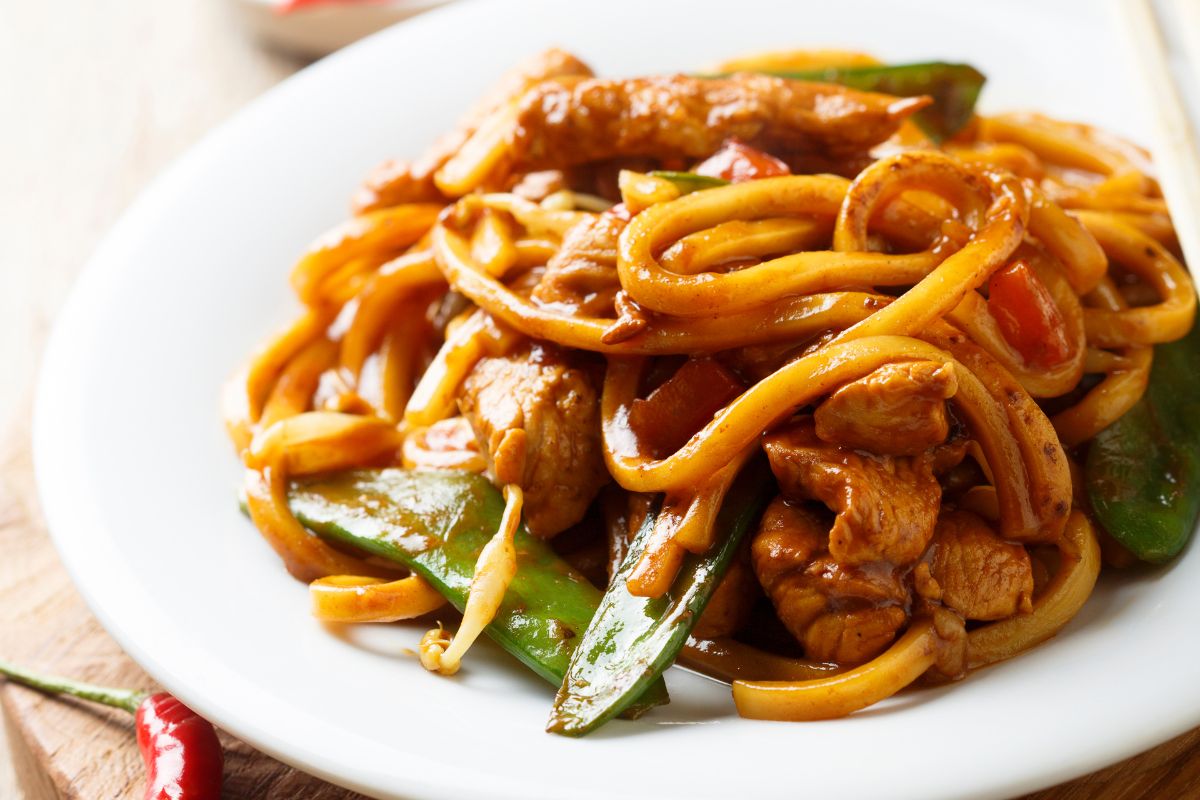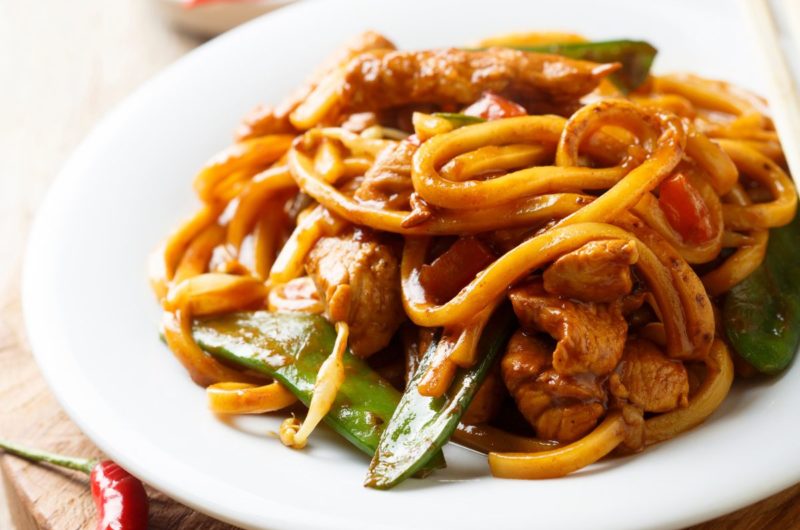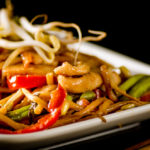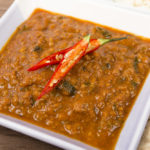We love noodles of all kinds, but Hokkien are definitely one of our favourites. There is something so satisfying about a steaming bowl of chewy egg noodles, bathed in a good savoury sauce.
Hokkien noodles are one type of egg noodle and are commonly used in the Hawker-style dishes of Southeast Asia cuisines – especially Malaysia and China.
You can buy them either fresh or semi-dried in supermarkets and Asian grocers. When fresh, you can blanch them briefly and then pop them straight into a recipe. When semi-dried, you can either boil or microwave them prior to adding to your dish.
If you are on the hunt for a tasty Hokkien noodle recipe then look no further. This dish is a savoury delight, with thick, bouncy noodles coated in a salty, moreish sauce.

The noodles are packed with succulent shrimp, juicy pork belly and fresh cabbage. If you want to satisfy those umami noodle cravings then keep reading to find out how to make this Hokkien noodle recipe.
Do you love the heat and spice of Sichuan dishes? Then see our post on the Best Sichuan Food in Melbourne.
What Do You Need?
This is a one pot recipe which makes the clean up really easy. All you need is a large wok.
You will also need a knife and a chopping board to prepare the ingredients.
You can use whatever utensil you prefer to stir the ingredients in the wok, but tongs work well when you want to toss the noodles and ensure that everything is coated in the sauce.
If you like to cook Southeast Asian dishes, then owning a durable wok is a great investment. In fact, a wok is one of the best pieces of kitchen equipment as you can cook so many things in one. Click here for more information and prices.
Fancy something sweet after your noodles? Take a look at our Traditional Chinese Dessert Recipes
Tips And Tricks
Follow these tips and tricks if you want this hokkien noodle recipe to come out perfectly every time.
- Blanching the noodles – Make sure that you blanch your noodles for no more than 30 seconds. Any longer and you will risk turning them soggy. Drain them immediately, as they will continue to cook as long as they are in the water.
- Preparation – Make sure that you prepare the noodles, the sauce and chop all of the ingredients before you start cooking. This kind of stir fry is cooked hot and fast, so you need to concentrate and keep the ingredients moving around the wok to avoid anything catching and burning.
- Shrimp – Use good quality shrimp so it is nice and juicy. Fresh is best, but if you are using frozen shrimp make sure that it is fully thawed before you start cooking it.
- Pork – The pork belly should also be of good quality. You want to make sure that it is tender, not tough.
- Chicken stock – It is really important to make sure that you use unsalted chicken stock. There is a lot of salt in the soy sauce, so if you use salted chicken stock then salty note in the sauce will become overpowering.
Here are our go to Leftover Pork Recipes
How Can You Customise This Recipe?
There are a few ways to customise this Hokkien noodle recipe if you want to make a few changes.
- Noodles – Thick egg noodles make this dish nice and chewy, but if you prefer you can use thinner egg noodles. They won’t take as long to cook, so you may need to adjust the cooking times.
- Pork – You can swap out the pork for chicken if you prefer. Chicken does not release fat as it cooks, so you may need to start off with more oil in the work. Alternatively, you could use chicken and bacon as the bacon will provide some of the fat.
- Shrimp – If you don’t like seafood you can leave out the shrimp or swap it for another type of meat. You could also use a different type of seafood, like squid, mussels, or crab.
- Vegetarian – If you want to make this a vegetarian recipe, swap the pork and shrimp for tofu and use vegetable stock instead of chicken stock.
- Vegetables – The vegetables used in this dish work really well with the flavours and textures, but you can switch them out for whatever vegetables you fancy. You could use onions and bell peppers, or spinach and peas. You could also go for baby sweetcorn and bamboo shoots, or throw in some bean sprouts.
Fine tune your stir-frying skills with the right Wok Utensils. Click here for more information and price.
- Chilli – If you like your stir fry to have a kick of spice, why not add in some fresh chilli when you add the garlic? You could also use chilli oil instead of vegetable oil, or add some chilli powder to the sauce.
- Garnish – If you want to add a garnish to this recipe, you could use some finely chopped spring onion. You could also serve this dish with a wedge of fresh lemon to squeeze over the shrimp.
- Ginger – Another flavour that would work well in this dish is ginger. Add some grated ginger when you add the garlic to bring an aromatic flavour to this stir fry.
- Orange Cake - April 23, 2024
- Best Cake Shops, Cake Delivery and Takeaway Cakes in Melbourne - April 23, 2024
- The 15 Best Mexican Restaurants In Melbourne - April 23, 2024









